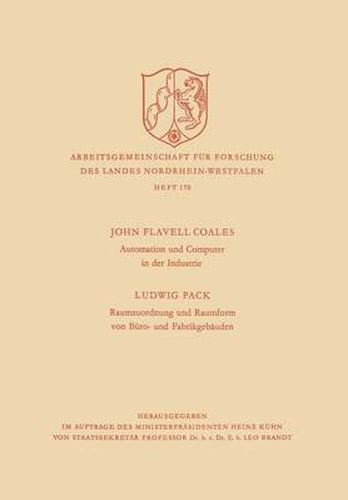Readings Newsletter
Become a Readings Member to make your shopping experience even easier.
Sign in or sign up for free!
You’re not far away from qualifying for FREE standard shipping within Australia
You’ve qualified for FREE standard shipping within Australia
The cart is loading…






This title is printed to order. This book may have been self-published. If so, we cannot guarantee the quality of the content. In the main most books will have gone through the editing process however some may not. We therefore suggest that you be aware of this before ordering this book. If in doubt check either the author or publisher’s details as we are unable to accept any returns unless they are faulty. Please contact us if you have any questions.
In the planning of the spatial distribution of a system of organizational units between which transportation is necessary the attempt will always be made so to arrange the individual organizational units within the overall system that the expenditure in transportation influenced by the arrangement is kept to a minimum. In this lecture a method of calculation is described which permits the above-mentioned problem of minimization to be handled with computers. The basic idea is the successive improvement of an inital solution by interchanges in the organizational units of the system. The procedural manner to be applied is expanded to an iteration method. In addition to the theoretical presentation of the method, technical programm- ing aspects are discussed and the limits defined which are set by the capacity and speed of modern computers. Two practical applications of the method are described, whereby it is specially indicated how particular conditions can be taken into account through extensions of the method. Resume A l'etude du partage d'espace d'un systeme d'unites d'organisation entre lesquelles sont a prevoir des transports, on essaiera toujours d'arranger les differentes unites d'organisation, en dedans de l'ensemble, de fa on a !
$9.00 standard shipping within Australia
FREE standard shipping within Australia for orders over $100.00
Express & International shipping calculated at checkout
This title is printed to order. This book may have been self-published. If so, we cannot guarantee the quality of the content. In the main most books will have gone through the editing process however some may not. We therefore suggest that you be aware of this before ordering this book. If in doubt check either the author or publisher’s details as we are unable to accept any returns unless they are faulty. Please contact us if you have any questions.
In the planning of the spatial distribution of a system of organizational units between which transportation is necessary the attempt will always be made so to arrange the individual organizational units within the overall system that the expenditure in transportation influenced by the arrangement is kept to a minimum. In this lecture a method of calculation is described which permits the above-mentioned problem of minimization to be handled with computers. The basic idea is the successive improvement of an inital solution by interchanges in the organizational units of the system. The procedural manner to be applied is expanded to an iteration method. In addition to the theoretical presentation of the method, technical programm- ing aspects are discussed and the limits defined which are set by the capacity and speed of modern computers. Two practical applications of the method are described, whereby it is specially indicated how particular conditions can be taken into account through extensions of the method. Resume A l'etude du partage d'espace d'un systeme d'unites d'organisation entre lesquelles sont a prevoir des transports, on essaiera toujours d'arranger les differentes unites d'organisation, en dedans de l'ensemble, de fa on a !